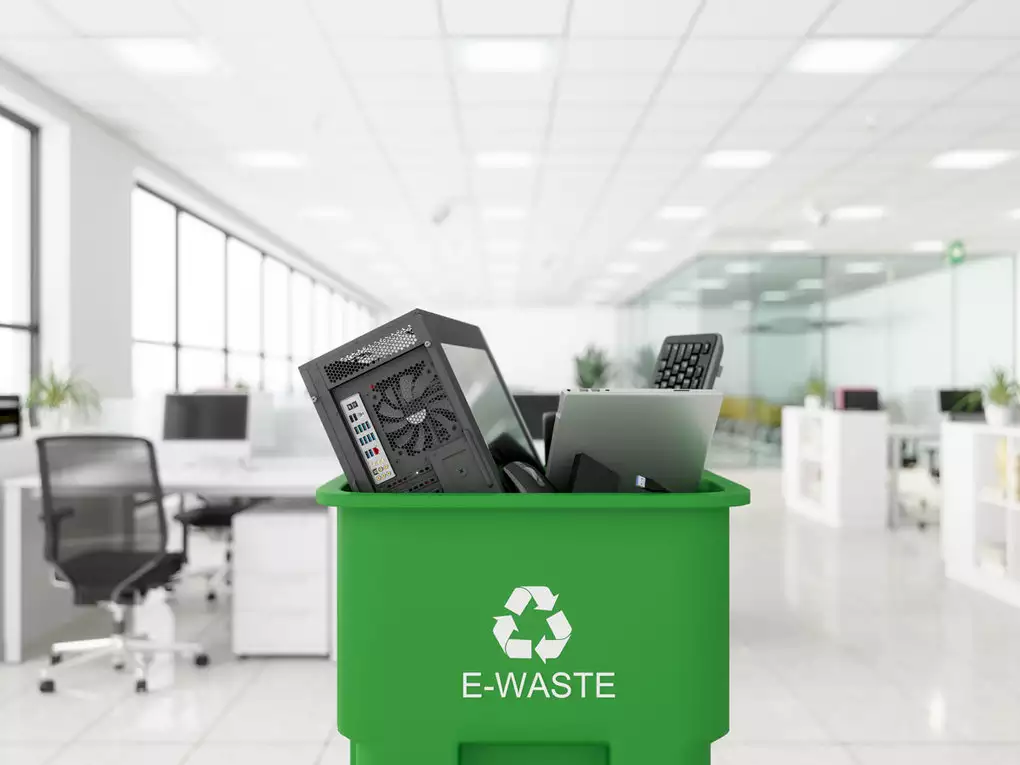What Counts as e-Waste?

With the ever-evolving state of electronics and technology, protecting our environment is more critical than ever. Each year roughly 50 million tons of e-waste are generated worldwide, so everyone must participate in the safe disposal of outdated equipment.
Improper electronics disposal can lead to environmental factors that can affect your community, as many tech devices contain dangerous chemicals such as lead, mercury, and chromium. Any business that utilizes technology is responsible for ensuring the proper protocols are followed to destroy and dispose of e-waste.
What Is e-Waste?
Electronic waste, or e-waste, refers to any electronic product near the end of its life cycle. This term not only encompasses such devices as computers and televisions, but also VCRs, copiers, stereos, batteries, and other similar items.
Electronics become e-waste when they reach the end of their life cycle and are thrown away with no intent to reuse any of their components.
E-waste is a uniquely modern problem with far-reaching implications for community health and the environment. Current methods for disposing of e-waste can expose workers to unsafe chemicals and compounds when electronics are burned or melted down to try to recapture components.
In 2019 alone, the US generated seven million tons of e-waste, with only 15% reclaimed for recycling. The issue is severe enough that e-waste is considered to be a hazardous material in California.
What Qualifies as e-Waste?
E-waste refers to any electronic product that will be thrown away rather than reused in any capacity.
Items that qualify as e-waste include, but are not limited to, the following:
- TVs
- Monitors
- Computers
- Printers and fax machines
- Tablets
- Keyboards
- Cell phones
- Company servers
- Fluorescent bulbs
- Batteries
- Point of Sale (POS) machines
- Office Phones
- Audio Equipment (stereos, microphones, headphones and earbuds)
Any electronic products can become e-waste after the end of their life cycle if they aren’t reused or properly recycled for parts.
What to Do with e-Waste
Aside from their harm to the environment, many states and cities now prohibit the disposal of specific electronics in public landfills (including Sioux Falls, South Dakota). Therefore, it’s essential to follow local and state laws regarding e-waste disposal to ensure your business is in compliance.
If you’re upgrading to the latest technology, but your old devices are still functional, you can likely donate or sell them for reuse. There is a healthy market for older, refurbished technology.
When replacing electronic devices, check if there are any certified electronics recyclers in your area who can guarantee proper data destruction, if needed, and responsible recycling. When looking at certifications, those specific to the ewaste industry include e-Stewards and R2 – but be weary of false claims of certification by asking to see thier up to date certificates.
Many of these electronics recycling providers will offer instructions on how to package and prepare electronics for disposal; some services will even pick up e-waste from your location and offer onsite services such as hard drive shredding and serial number tracking.
Secure e-Waste Recycling and Destruction
If you have any e-waste disposal needs in the North Dakota and South Dakota region, contact SEAM to explore your options. Based in Sioux Falls, we accept electronics for certified destruction, recycling and resale from businesses and residents across the upper Midwest.
SEAM provides IT recycling and data destruction services including onsite shredding and hard drive wiping to South Dakota, North Dakota, Minnesota, Iowa, and Nebraska.
Schedule a pickup or contact us for more information.





